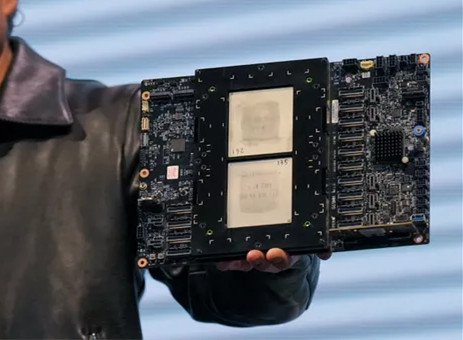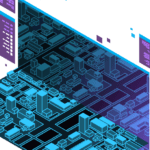Over the past decade, Nvidia has established an almost unassailable lead in the production of chips capable of performing complex AI tasks such as image, facial, and speech recognition, as well as generating text for chatbots like ChatGPT. The company’s rise to dominance stems from its early recognition of the AI trend, its dedication to tailoring chips specifically for these tasks, and its development of essential software that supports AI development.

AI Advancements
Jensen Huang, Nvidia’s co-founder and CEO, has consistently pushed the boundaries to maintain the company’s leadership. Nvidia not only provides advanced AI chips but also offers customers specialized computers, computing services, and other essential tools for AI development. This comprehensive approach has made Nvidia a one-stop shop for AI solutions, setting it apart from competitors.
While companies like Google, Amazon, Meta, and IBM have also ventured into AI chip production, Nvidia controls more than 70 percent of the AI chip market and holds an even more significant share in training generative AI models, according to research firm Omdia. This dominant position was underscored in May when Nvidia projected a 64 percent increase in quarterly revenue, far exceeding Wall Street expectations. The company, now valued at over $1 trillion, continues to set records and signal booming demand for AI technologies.
Strategic Developments
In a recent earnings call, Nvidia announced a significant shift in its development strategy: the company will now design new chips annually, instead of the previous biennial schedule. This change, as stated by CEO Jensen Huang, reflects Nvidia’s commitment to staying ahead of the curve in the rapidly evolving AI landscape. Following the release of the Blackwell chip, Nvidia plans to introduce a new architecture called “Rubin” in 2025, which will bring the R100 AI GPU to market.
This accelerated pace will extend to all of Nvidia’s chip lines, including CPUs, GPUs, networking NICs, and switches. Huang emphasized that future AI GPUs will be backward-compatible, ensuring a seamless transition for customers upgrading their data centers from H100 to H200 to B100. This compatibility allows businesses to maximize their existing infrastructure investments while benefiting from the latest advancements in AI technology.
The Competitive Edge
The demand for Nvidia’s AI GPUs is expected to continue outstripping supply as companies race to upgrade their infrastructure. Huang highlighted the financial benefits for customers, who save money and generate revenue through these powerful chips. He also pointed out the competitive advantage of being the first to achieve significant AI milestones, as opposed to merely offering incremental improvements.
Nvidia’s strategic focus extends beyond traditional tech sectors. The company’s CFO revealed that automotive applications would become the largest enterprise vertical within its data center business this year. Tesla, for instance, purchased 35,000 H100 GPUs to train its full-self-driving system, underscoring the broad applicability of Nvidia’s AI technology. Additionally, consumer internet companies like Meta continue to drive strong growth, with plans to operate over 350,000 H100 GPUs by the end of the year.
AI Chips in Gaming Development
Nvidia’s advancements in AI chips have profound implications for the gaming industry. These powerful chips enable the creation of more intelligent game characters and highly realistic game environments, revolutionizing the gaming experience.
Intelligent Game Characters
AI chips enhance the behavior of non-player characters (NPCs) in games, making them more adaptive and realistic. These chips enable NPCs to learn from player behavior and environment, adjusting their strategies dynamically. For example, enemies in a game can become more challenging by analyzing and adapting to a player’s tactics, creating a more engaging and immersive experience.
Moreover, AI chips support natural language processing, allowing NPCs to engage in more natural and context-aware conversations with players. This capability enriches the narrative and interactive elements of games, making player-NPC interactions more meaningful and immersive.
Realistic Game Environments
AI chips also play a crucial role in rendering realistic game environments. Technologies like ray tracing, powered by AI chips, simulate the physical behavior of light to create stunningly realistic visuals, with lifelike reflections, shadows, and textures. This level of detail significantly enhances the visual appeal and immersion of games.
Furthermore, AI-driven procedural generation enables the creation of vast and complex game worlds dynamically. This technology allows developers to generate detailed landscapes, intricate architectures, and diverse ecosystems, offering players endless exploration possibilities. AI chips also facilitate advanced physics simulations, ensuring that in-game elements like water flow, fabric movement, and collision dynamics behave as they would in the real world.
Future Prospects and Applications
Looking ahead, the future of AI chips in gaming is incredibly promising. As AI technology continues to evolve, we can expect even more sophisticated and immersive gaming experiences. AI chips will enable the development of games with unparalleled realism, from character interactions to environmental dynamics.
Moreover, AI-driven personalization will become a standard feature in games. AI chips will analyze player preferences and behaviors to tailor game experiences, adjusting difficulty levels, offering personalized challenges, and crafting unique storylines. This level of personalization will keep players engaged and invested in games for longer periods.
In conclusion, Nvidia’s dominance in AI chips, driven by its visionary leadership and strategic innovations, has positioned the company at the forefront of AI and gaming technologies. As AI chips continue to advance, their impact on the gaming industry will be profound, ushering in a new era of intelligent, immersive, and personalized gaming experiences.
